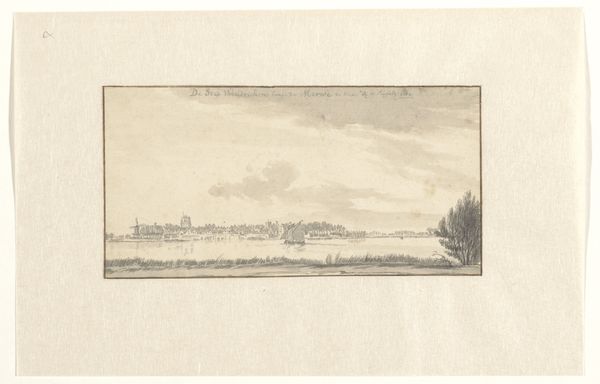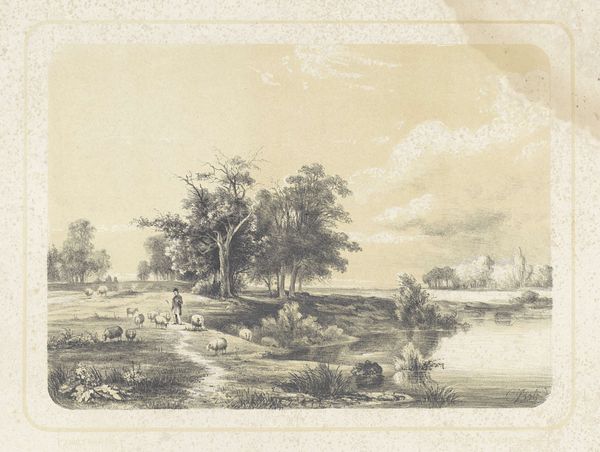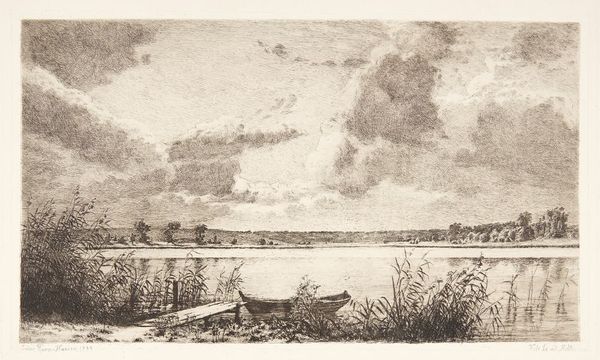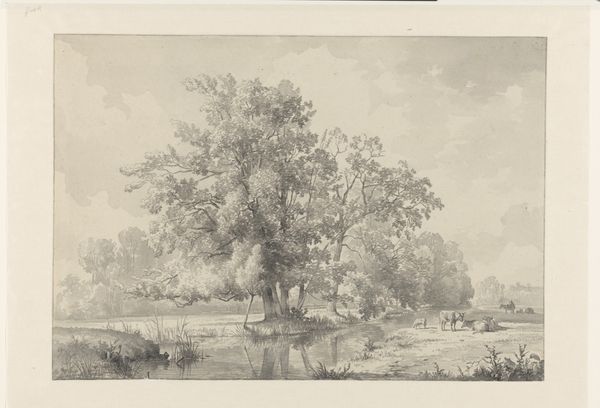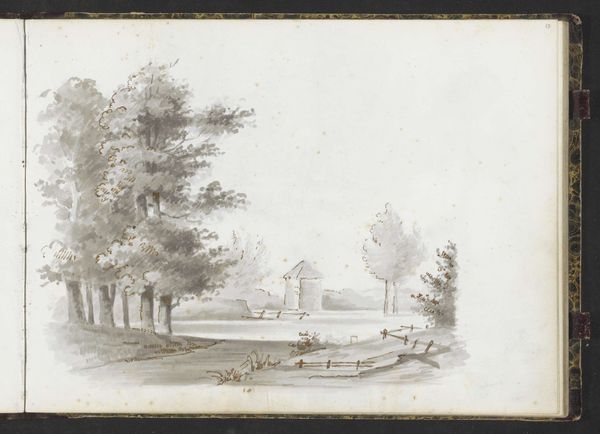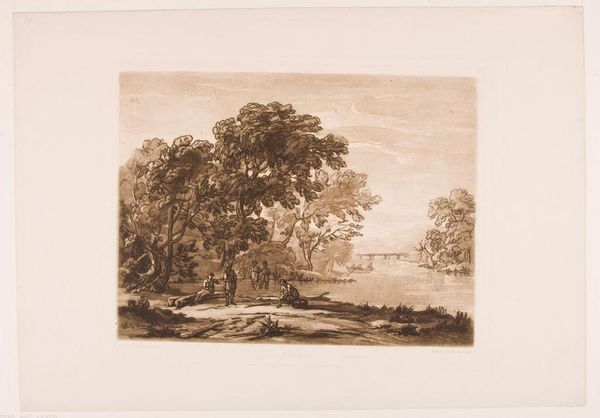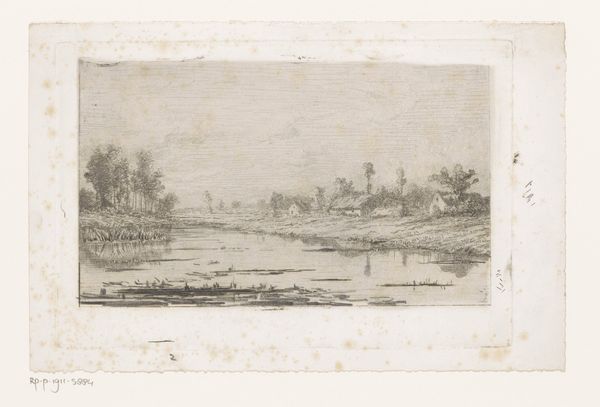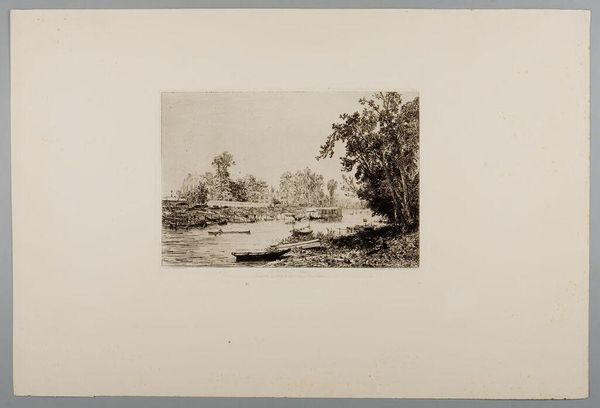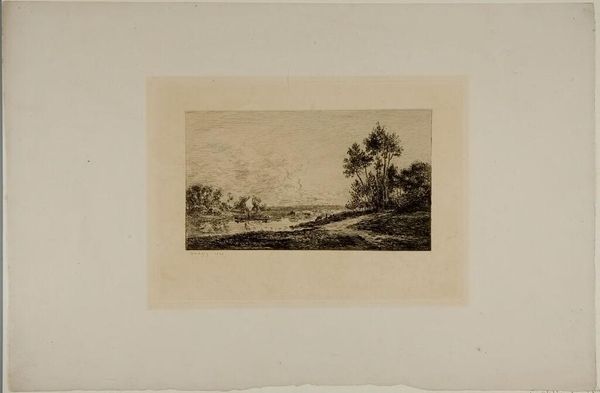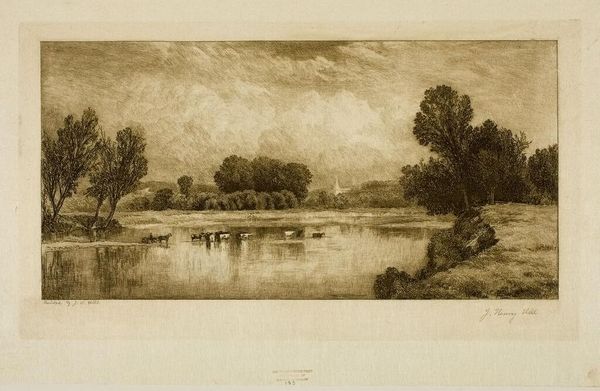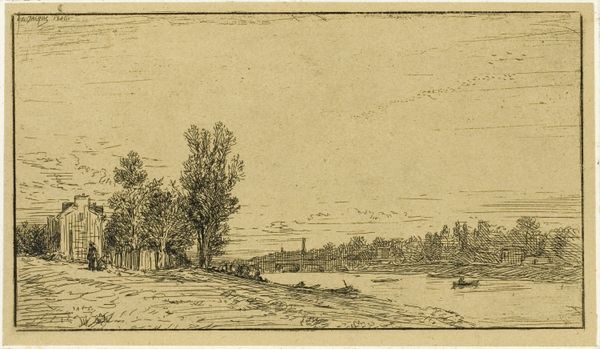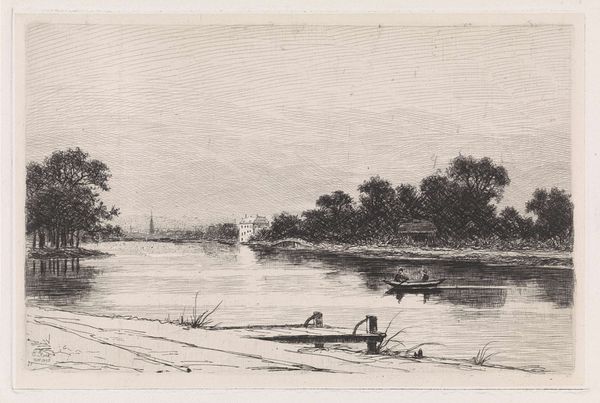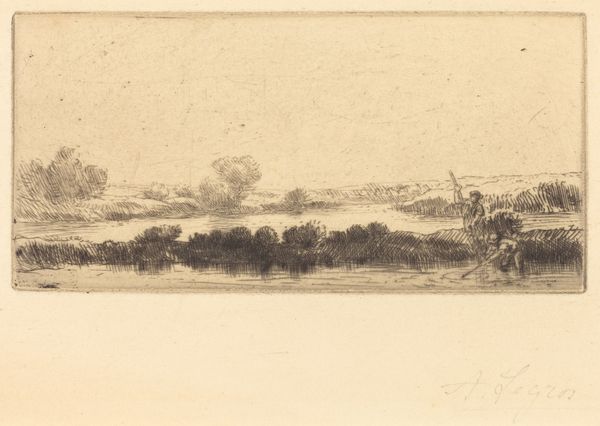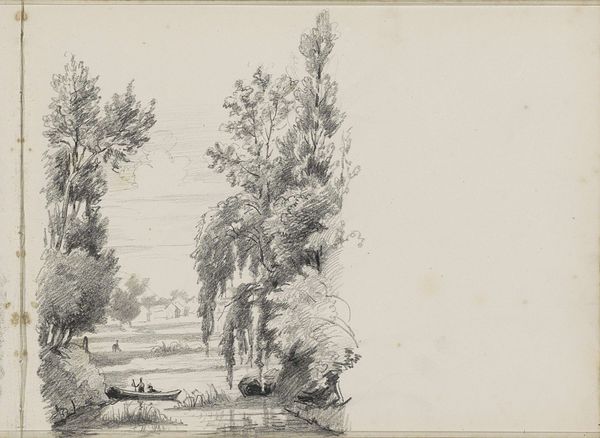
drawing, plein-air, watercolor
#
portrait
#
drawing
#
ink painting
#
plein-air
#
landscape
#
boy
#
figuration
#
watercolor
#
romanticism
#
watercolor
Dimensions: 4 1/16 x 10 13/16 in. (10.3 x 27.5 cm)
Copyright: Public Domain
Curator: This is John Crome’s “Landscape with Boy Fishing,” created around 1818. It’s a watercolor and ink drawing currently residing here at the Metropolitan Museum of Art. Editor: Oh, how serene! There's something about the limited palette, the sepias and browns, that whispers of a time long past. It's a quiet scene. Peaceful. Curator: Quiet it is! Crome was a leading figure of the Norwich School of painters, you know, deeply committed to representing the natural beauty of the Norfolk countryside, en plein air no less. It really highlights the simple pleasures of rural life. This boy with his fishing rod, is, perhaps, an intentional statement on his own appreciation of landscape art’s simple freedom from rigid portraiture. Editor: Absolutely, it speaks to Romanticism's embrace of nature and individualism. But who *is* this boy? What's his relationship to the land? I wonder if this scene, beyond its surface tranquility, reflects broader socio-economic tensions? Was he perhaps a child laborer escaping the fields, even for just an afternoon? The reflection on the water feels as though it conceals many shadows. Curator: That’s an interesting interpretation! Though Crome might have simply been after the sheer artistry of reflecting light and texture through watercolor. He certainly captures that sense of immediacy. The strokes feel confident and free, don’t they? Editor: Confident perhaps, but what about accessibility? Consider the historical context: access to leisure, like fishing, was often dictated by land ownership and class. Depictions like these, seemingly idyllic, can mask deeper inequalities if we don't read them critically. Was Crome even remotely aware of that access discrepancy? Curator: Well, I think there's always space for various readings and re-readings; art does that so well! I see a skilled artist relishing in nature's transient beauty through spontaneous washes of color. Though I certainly don’t disavow its historic context either! Editor: And I can appreciate the technical mastery while also wanting to push beyond the aesthetic. Considering art through a critical lens lets us excavate the hidden layers, giving voices to those often absent in the historical narrative. It’s about seeing what *isn't* immediately visible. Curator: Absolutely, and on that note, I think this particular viewing helps appreciate both Crome’s original intent and the painting’s potential meanings in contemporary conversations. Editor: Exactly! It's about forging a dynamic connection between past and present, artist and audience—prompting critical dialogues with cultural artifacts that speak to all.
Comments
No comments
Be the first to comment and join the conversation on the ultimate creative platform.
